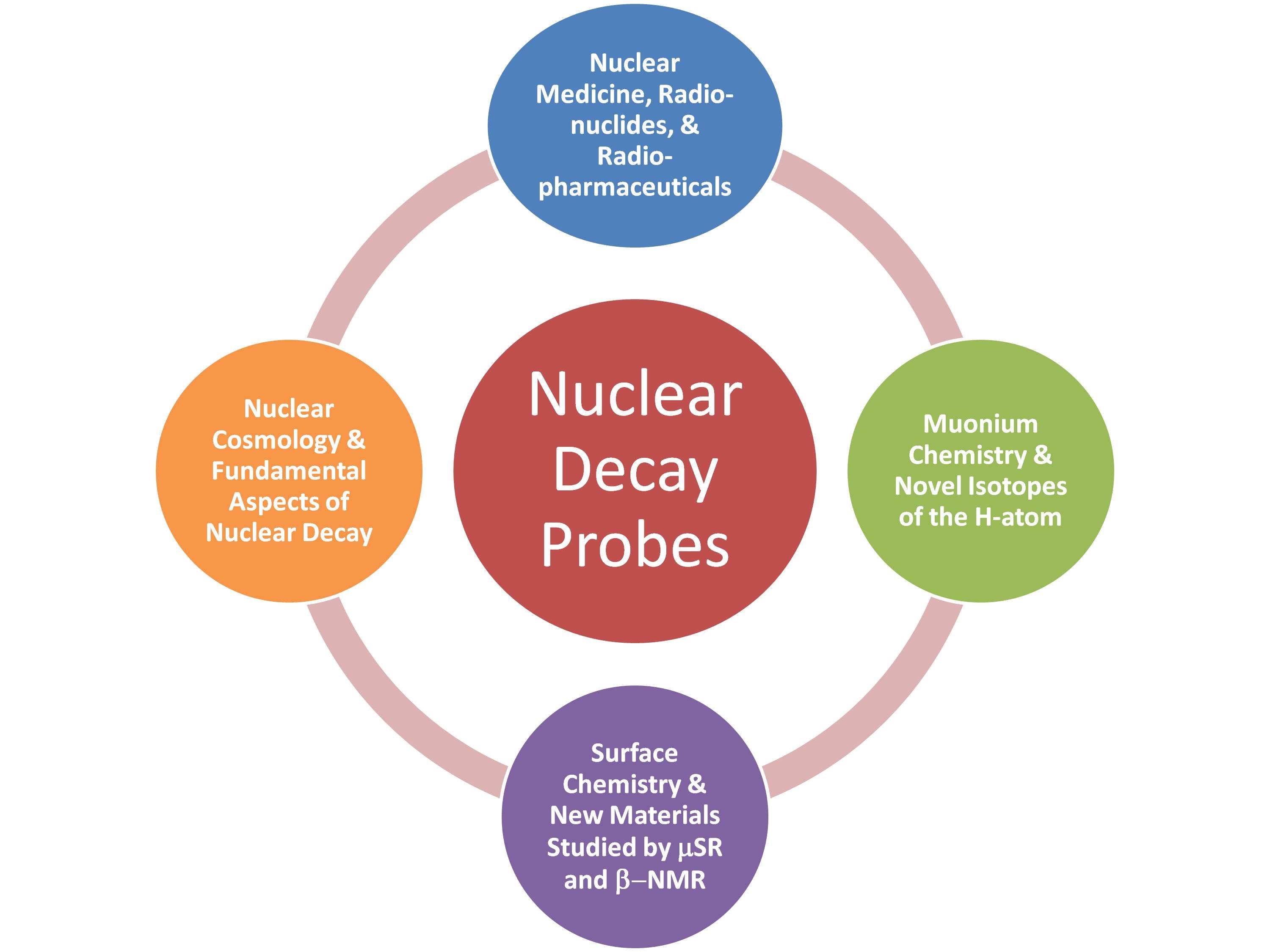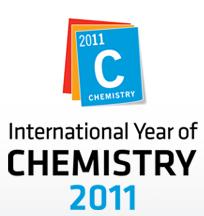Welcome to TRIUMF's 2011 Focus on Nuclear and Radiochemistry
| The Calendar Year 2011 has been designated as the International Year of Chemistry by the United Nations. As a national laboratory for Canada, TRIUMF is part of the enterprise of Chemistry in Canada with an emphasis on what's called Nuclear Chemistry. TRIUMF will be highlighting different research topics on its web site that address the Nuclear Chemistry aspects of its research programs, expanding on the themes briefly outlined below. |
Chemistry has often been referred to as the "Central Science," positioned as it were midway between Biology and the Life Sciences and Mathematics and Physics. This is also seen in the broad array of research topics that may be found in a modern chemistry department which typically range from novel organic synthesis techniques for new drugs to studies in chemical physics and fundamental interactions, with theory and molecular modeling often playing a crucial role across these disciplines.
This is also the case in the broad-ranging research pursuits that may be found under the Nuclear Chemistry umbrella at TRIUMF and its ISAC rare-isotope-beam facility, where the common thread between them is the study or utilization of "nuclear decay probes." Current research topics range from the life sciences to novel isotopic probes in physical chemistry, to studies of organic free radicals in different environments, to new materials and materials sciences, to nuclear reactions and nuclear astrophysics as well as to nuclear science at the sub-atomic level.
Life Sciences & Nuclear Medicine
In the realm of life sciences, new synthetic techniques for the incorporation of radioisotopes for nuclear medicine (11C, 18F and 68Ga for Positron Emission Tomography) are being developed, where nuclear chemists have previously established the optimal cross sections for 11C and 18F production; to new sources for the production and enrichment of 99Mo, which β decays to produce meta-stable 99mTc, the most widely used radioisotope for diagnostic nuclear medicine (and much in the news of late in terms of aging nuclear reactors world-wide) as well as the use of cyclotrons for the direct production of 99mTc; to the use of stopping proton beams in the treatment of ocular cancer.
These endeavors also involve state-of-the-art radiochemical techniques and "wet chemistry" in effecting the efficient separation of radioisotopes that is necessary, as well as in the design and operation of production targets for nuclear sciences and isotope production, where thermal stresses, heat transfer, nuclear stopping and velocity distributions, particularly in the production of rare-isotope ion beams at ISAC, all play important roles.
Muons & Muon Chemistry
In the realm of muon chemistry, muon beams extend the normal isotopic mass range of H and D atoms at both ends, to the lightest isotope of hydrogen, "muonium" (Mu), formed by a positive muon (μ+) and an electron, with an atomic mass of only 0.113 amu, to its heaviest isotope, the muonic He atom (4Hemu), formed by negative muon (μ-) capture on He, and with a mass of 4.11 amu, thereby providing an unprecedented mass range of a factor of 36 in the study of kinetic isotope effects and chemical reaction dynamics (in the gas phase); to the study of H-atom like kinetics probed by Mu in the high temperature/pressure environments of water that are found in nuclear reactors; to the utility of using the muon polarization in Mu in the production of novel "muoniated" organic free radicals in environments not easily accessible to ESR studies, including supercritical media and in ionic liquids, both important in the realm of "green chemistry".
Materials Science
Nuclear decay probes also play important roles in wide-ranging studies in materials science at TRIUMF, from the study of Mu-substituted free radicals in Zeolites, which are important industrial catalysts; to novel inorganic materials that are highly conducting and even superconducting, probed by stopping μ+ beams, and the formation of paramagnetic Mu-like sites; to more fundamental aspects of superconductivity as manifest in thin films and at interfaces utilizing the β-NMR program at ISAC, also a unique facility in the Americas.
Nuclear Reactions & Cosmology
In the traditional realm of nuclear reactions, spectroscopy and structure that nuclear chemists are often involved with (as in the PET program noted above) and which is clearly on the interface with nuclear physics, there are also a range of programs underway at ISAC involving nuclear astrophysics and cosmology, probing questions that continue to perplex as to the origin of the elements, highly unstable halo nuclei, as well as probing the sub-atomic world in detailed studies of nuclear β-decay and the weak interaction.
"Nuclear decay probes" is the term used to describe the chief techniques used at TRIUMF in chemistry. The radioactive decay of a nucleus within a chemical structure is used to convey information about the location, structure, or local magnetic properties around the probe of interest. For instance, nuclear decays are used as a "probe" in nuclear medicine to identify the precise location of the biological molecule labeled with the specific radioisotope. Similarly, in muonium chemistry, the decay of the muon is used to probe the chemical reactivity and structural properties of the environment in which the muon is placed. |  |

